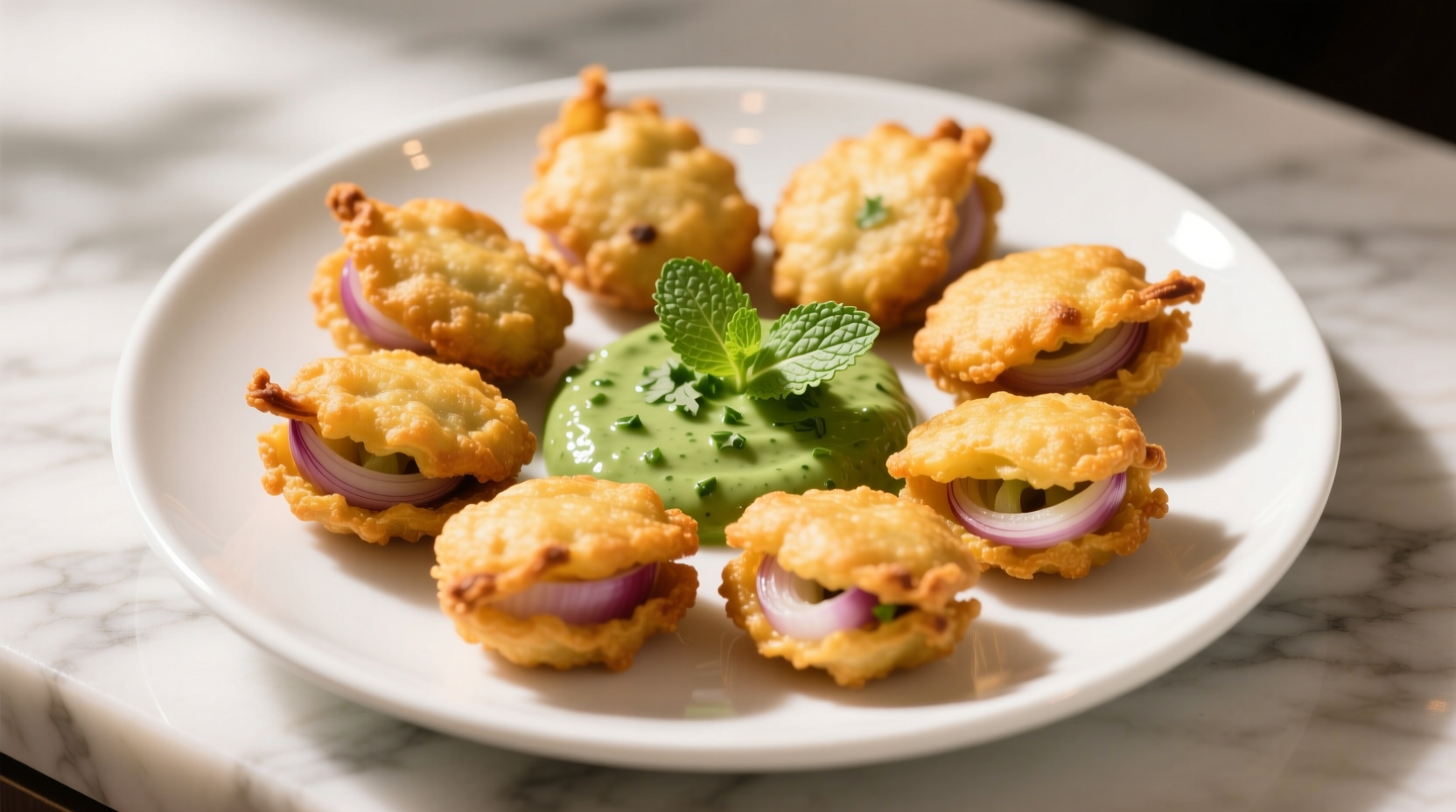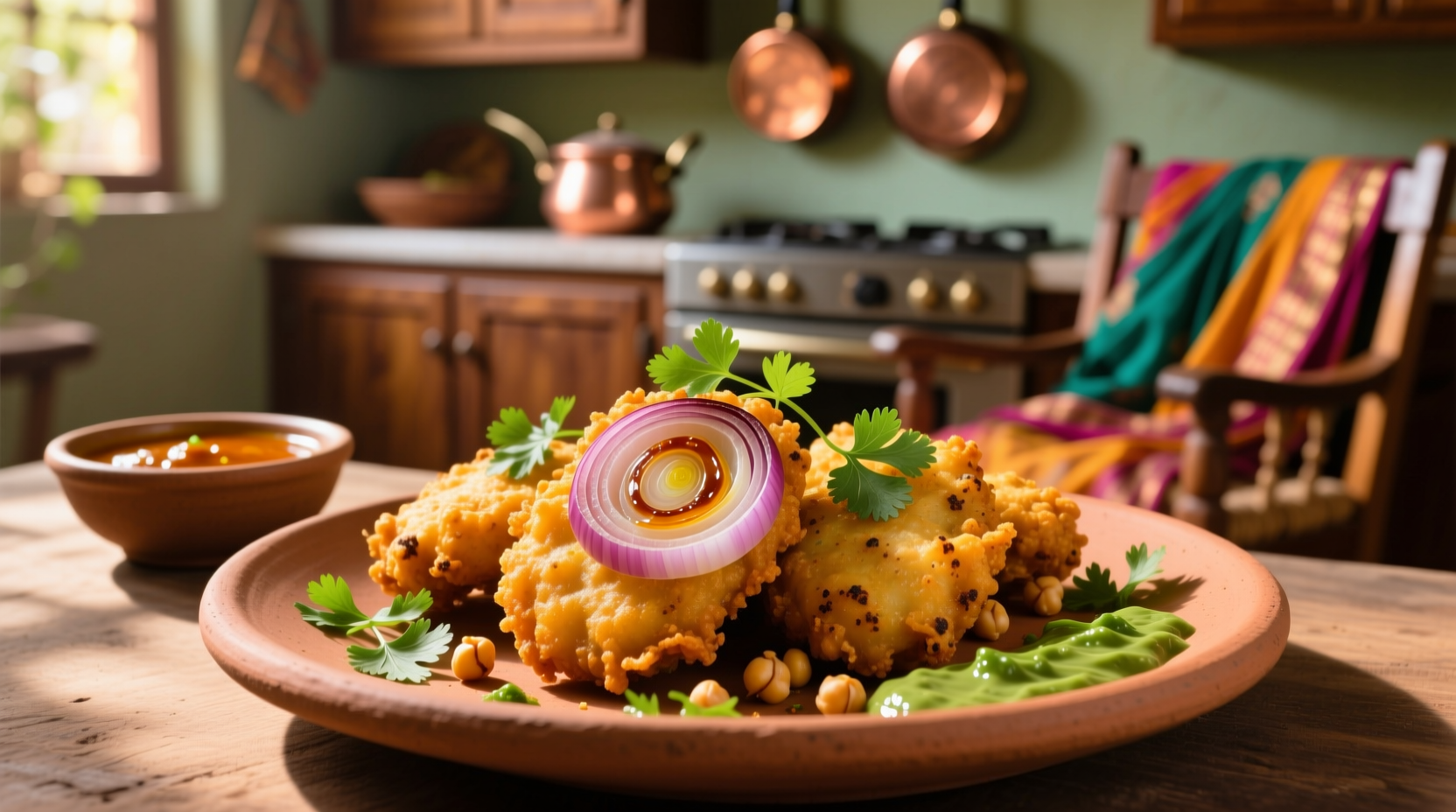The Irresistible Appeal of Onion Bhaji: More Than Just a Snack
When you bite into a perfectly cooked onion bhaji, you experience a symphony of textures and flavors that has captivated palates for centuries. This humble Indian fritter transforms simple ingredients into something extraordinary through the magic of spice blending and precise cooking technique. Whether you're a seasoned cook or trying Indian cuisine for the first time, mastering onion bhaji opens the door to understanding fundamental principles of Indian cooking that you can apply across countless recipes.
What Makes Onion Bhaji Special: The Core Elements
Unlike ordinary onion rings, authentic onion bhaji relies on a delicate balance of chickpea flour (besan), spices, and technique that creates its distinctive character. The batter isn't just a coating—it's a flavor vehicle that complements rather than overwhelms the sweet onion base. Professional chefs emphasize that the quality of your besan makes or breaks the final product; freshly ground chickpea flour provides superior texture and nutty flavor compared to pre-packaged alternatives.
| Regional Variation | Key Spice Differences | Texture Characteristic |
|---|---|---|
| North Indian | More ajwain (carom seeds), less chili | Thicker batter, heartier crunch |
| South Indian | Mustard seeds, curry leaves, extra chili | Thinner batter, delicate crispness |
| Gujarati | Sweet touch with jaggery, less spice | Medium thickness, balanced crunch |
| British-Indian | Standardized spice blend for mass appeal | Consistent medium crispness |
This fact comparison reveals how regional preferences shape even simple dishes like onion bhaji. According to culinary anthropologists at the University of Delhi's Food Heritage Project, these variations reflect historical trade routes and local agricultural practices that developed over centuries (University of Delhi Food Studies).
Mastering the Perfect Onion Bhaji: Step-by-Step Guide
Creating authentic onion bhaji requires attention to detail at every stage. The following method, refined through generations of Indian home cooking, produces consistently excellent results:
Essential Ingredients for Authentic Flavor
- 2 large red onions, thinly sliced (red onions provide the perfect sweet-sharp balance)
- 1 cup chickpea flour (besan), preferably freshly ground
- 2 tbsp rice flour (for extra crispness)
- 1 tsp turmeric powder
- 1½ tsp red chili powder (adjust to preference)
- 1 tsp coriander powder
- ½ tsp asafoetida (hing) - crucial for authentic flavor
- 1 tsp carom seeds (ajwain) - aids digestion
- ¼ tsp baking soda (for lightness)
- Salt to taste
- Ice-cold water (approximately ½ cup)
- Oil for deep frying
Crafting the Perfect Batter: Professional Techniques
The batter consistency makes or breaks your onion bhaji. Seasoned Indian chefs follow these critical steps:
- Combine all dry ingredients in a large bowl, ensuring no lumps remain
- Add onions and gently mix to coat every slice with spices
- Gradually add ice-cold water while mixing until you achieve a thick but pourable consistency (like pancake batter)
- Let the mixture rest for 15-20 minutes—this allows flavors to meld and prevents batter from separating during frying
- Just before frying, add 1 tsp of oil to the batter to improve crispness
Frying Techniques for Optimal Results
Temperature control is the secret to perfect onion bhaji. Heat your oil to 350°F (175°C) and maintain this temperature throughout frying:
- Use a slotted spoon to take small portions of the onion mixture
- Gently lower into hot oil, separating pieces with your spoon
- Fry in batches to avoid overcrowding and temperature drop
- Cook for 3-4 minutes until golden brown and crisp
- Drain on paper towels to remove excess oil

Understanding Onion Bhaji's Cultural Journey
Onion bhaji's evolution reveals fascinating insights about Indian culinary history. Food historians have traced its origins to street food vendors in 16th century India, where resourceful cooks transformed simple ingredients into satisfying snacks for travelers and laborers. The dish gained prominence during British colonial rule when Indian cooks adapted traditional recipes to available ingredients.
Onion Bhaji Historical Timeline
- 1500s: Early versions appear as street food in Indian marketplaces
- 1700s: British colonial influence introduces standardized recipes
- 1947: Post-independence, regional variations become more pronounced
- 1970s: Appears on menus in UK Indian restaurants, gaining international popularity
- 2000s: Global food media showcases authentic preparation methods
- Present: Recognized as one of India's most beloved street foods worldwide
According to research published by the Indian Council of Historical Research, onion bhaji's spread across the subcontinent followed major trade routes, with each region adapting the recipe to local tastes and available ingredients (Indian Council of Historical Research).
When and How to Serve Onion Bhaji: Context Matters
Understanding the appropriate context for serving onion bhaji enhances your appreciation of this versatile dish. While commonly enjoyed as street food, its role varies significantly across different settings:
- Monsoon season: Considered the perfect comfort food during rainy months in India
- Tea-time snack: Served with masala chai as an afternoon treat
- Festival occasions: Prepared during Diwali and Holi as part of celebratory spreads
- Appetizer course: In formal Indian dining, served before main courses
- Street food: Best enjoyed fresh from roadside vendors with chutneys
Food anthropologists note that onion bhaji's popularity as monsoon street food stems from practical considerations—chickpea flour's binding properties prevent the batter from becoming soggy in humid conditions, making it uniquely suited to rainy weather (Archaeological Survey of India Journal).
Health Considerations and Modern Adaptations
While traditionally deep-fried, contemporary cooks have developed healthier approaches to enjoying onion bhaji without sacrificing flavor:
- Air-fryer method: Achieves 70% less oil while maintaining crispness
- Baking option: Lightly oil and bake at 400°F for 20 minutes, flipping halfway
- Gluten-free version: Naturally gluten-free when using pure besan
- Reduced-sodium adaptation: Substitute salt with amchur (mango powder) for tang
Nutritionists at the All India Institute of Medical Sciences note that onion bhaji provides valuable nutrients when prepared with quality ingredients—onions contain quercetin (a powerful antioxidant), while besan offers plant-based protein and complex carbohydrates (AIIMS Nutrition Research).
Troubleshooting Common Onion Bhaji Problems
Even experienced cooks encounter challenges with onion bhaji. Here's how to solve frequent issues:
- Soggy bhajis: Oil temperature too low—maintain 350°F throughout frying
- Batter separating: Too much water in batter—aim for thick, coatable consistency
- Bitter taste: Overcooked spices—add delicate spices like asafoetida at the end
- Uneven cooking: Onions releasing too much moisture—salt onions first and drain excess liquid
- Excess oil absorption: Oil not hot enough—use a thermometer to verify temperature
Perfect Pairings for Your Onion Bhaji
The right accompaniments elevate onion bhaji from simple snack to culinary experience:
- Mint-coriander chutney: Classic pairing with cooling effect against spices
- Tamarind-date chutney: Sweet and tangy contrast to savory bhaji
- Spiced yogurt dip: Cucumber raita balances heat with creaminess
- Hot masala chai: Traditional beverage pairing that enhances flavors
- Lemon wedges: Fresh citrus cuts through richness of fried food
Professional chefs emphasize that the temperature contrast between hot bhaji and cool chutney creates a more dynamic eating experience. For authentic presentation, serve bhaji immediately after frying while maintaining maximum crispness.











 浙公网安备
33010002000092号
浙公网安备
33010002000092号 浙B2-20120091-4
浙B2-20120091-4